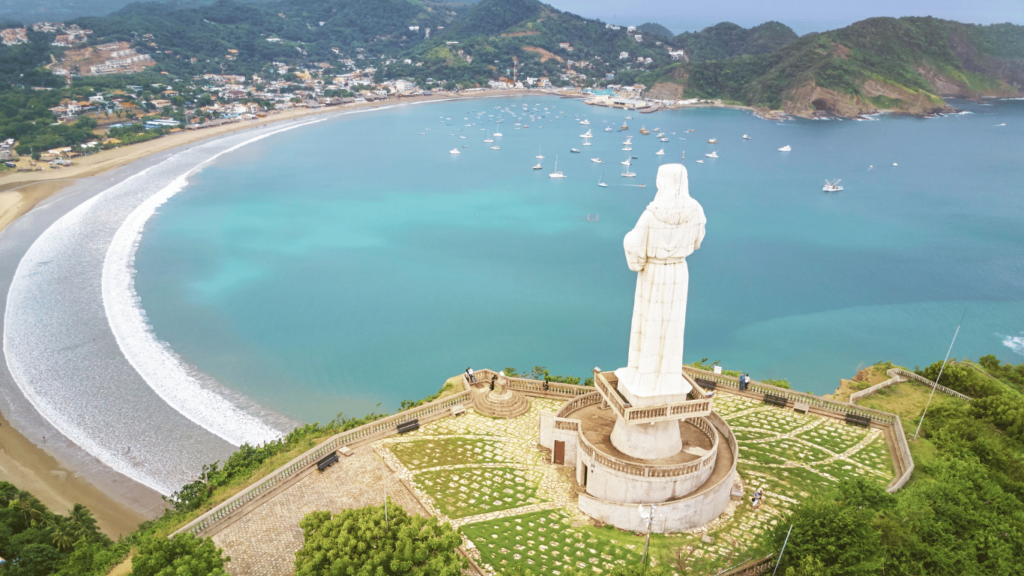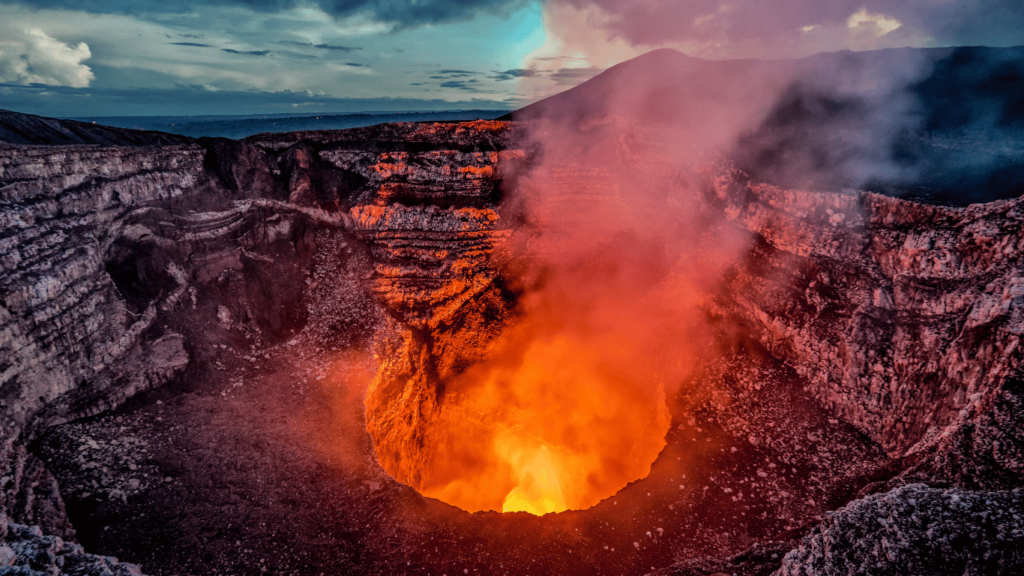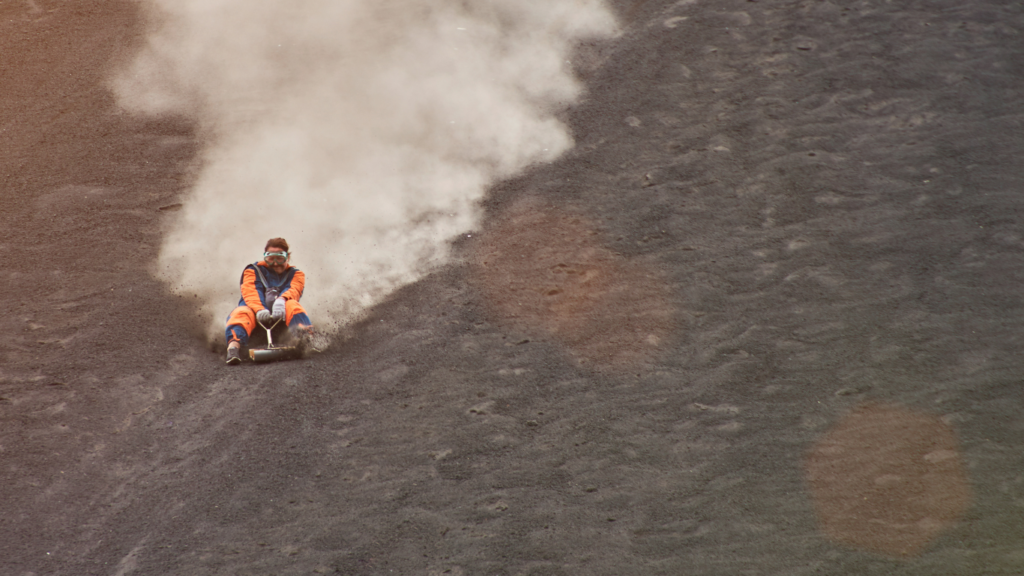The Land of Lakes and Volcanoes
Often overshadowed by its more touristy neighbors, Nicaragua is Central America’s hidden gem—a country where you can surf perfect waves in the Pacific one day, hike up an active volcano the next, and wind down on a hammock by a jungle-fringed lagoon all in the same week.
From the colonial streets of Granada and León, bursting with history and colorful architecture, to the remote Corn Islands with their turquoise waters and reggae beats, this is undoubtedly a contender for the best backpacker location in Central America. It’s easy on our backpacker budgets, remains blissfully unspoiled, and is packed with natural beauty and endless adventure.
Nicaragua’s magic lies in its contrasts: wild landscapes where volcanoes and cloud forests collide, vibrant cities filled with art and music, and quiet villages where life moves at its own, unhurried pace.
visas and entry requirements
Most people travel under the Central America Border Control Agreement (also known as CA-4). Under CA-4 travellers can go between Nicaragua, El Salvador, Guatemala and Honduras for as long as 90 days without a visa.
This 90-day period starts as soon as you enter any of these countries and does not restart when you cross borders. This is a surprisingly common mistake that backpackers make every year. Unfortunately, a quick border run to a neighbouring country can’t change the visa policy here folks.
In Nicaragua you do have the ability to extend your visa by 30 days for a fee, provided it’s within this 90 day period.
For most backpackers travelling across Central America this is the best way of
Local laws and customs
Nicas, as locals proudly call themselves, are big on family and community, and you’ll feel that wherever you go. Manners matter here, so a friendly señor or señora goes a long way when chatting with locals. Dressing a little more conservatively is a sign of respect especially on Sundays.
One thing to keep in mind: public drunkenness is pretty frowned upon. You can still enjoy the country’s amazing rum and beer, just do it at the hostel . And steer clear of drugs—Nicaragua has strict laws, and getting caught could seriously ruin your trip.
Religion, especially Catholicism, plays a huge role in daily life. You’ll see the just how seriously they take it in the vibrant festivals like La Purísima and La Gritería, where locals celebrate with street processions, fireworks, and music. If you’re visiting during a religious event, joining in respectfully is a great way to experience the culture. Just remember that modesty in both behaviour and dress is appreciated in and around churches.
Safety
The tragic reality of poverty stricken countries like Nicaragua is that it is shaped by the corruption of its businessmen, it’s government and its officials.
Police bribes—often disguised as “speeding tickets”, unexpected airport fees and or random stops—are a reality many Backpackers encounter. It’s always best to stay polite and simply pay the bribe in these situations. A good tip, is to always carry a reasonable amount of cash in your wallet but the bulk of your money in your backpack, so you can show the officers that you have given them all you seemingly have on you.
You should also always have a spare copy of your passport that you should show police as there are plenty of stories of police officers demanding money for returning passports.
Culture
Nicaragua’s culture is this incredible blend of indigenous roots and Spanish colonial vibes, creating a totally unique, colorful scene. In cities like León and Granada, you’ll feel it everywhere—from the stunning colonial architecture to the street art that tells stories of revolution and resilience. The locals love a good celebration, and you’ll hear the rhythm of marimba music filling the air during festivals, with traditional dances like Palo de Mayo bringing the streets to life. Baseball is practically a religion here, but so are the religious processions that mix deep faith with vibrant displays of community spirit.
Head out of the cities, and things slow down in the best way. Rural villages cling to old-school traditions, where life revolves around family, farming, and craftwork.
Nicaragua has faced its share of hardships—poverty, political unrest, and natural disasters have left their mark. Yet, it’s these struggles that have shaped a culture of resilience and a warmth to it’s people.
nature
The country is home to 19 volcanoes, both active and dormant, making it a fascinating destination for adventure seekers. Cerro Negro, famous for its unique volcano boarding experience, allows thrill-seekers to slide down its ash-covered slopes. Meanwhile, Masaya Volcano, known for its active lava lake, offers an exhilarating opportunity to gaze directly into the molten core of the Earth.
Lakes are another highlight of Nicaragua’s natural landscape. Lake Nicaragua (Lago Cocibolca) is the largest freshwater lake in Central America and uniquely hosts freshwater sharks so don’t dive in too quickly. Just a short distance away lies Lake Managua (Lago Xolotlán), which, despite its pollution concerns, remains an important part of the region’s ecology.
Nicaragua’s biodiversity is remarkable, with over 7,000 species of plants and animals. The country is a birdwatcher’s paradise, boasting more than 700 bird species, including colorful toucans and the striking scarlet macaw. Notable reserves, such as the Indio Maíz Biological Reserve, showcase this biodiversity, offering habitats for elusive wildlife like jaguars, pumas, and tapirs.
On the coast, Nicaragua’s beaches provide stunning contrasts. The Pacific Coast is renowned for its surfing hotspots like Playa Maderas and San Juan del Sur, while the less-developed Caribbean Coast features pristine white-sand beaches, calm waters, and vibrant coral reefs.
cuisine
Nicaraguan cuisine is a vibrant blend of indigenous, Spanish, and Caribbean influences, offering hearty flavors and fresh ingredients. A staple dish is gallo pinto, a delicious mix of rice and black beans often served at breakfast with eggs and plantains. Another beloved dish is nacatamal, a traditional tamale made with corn dough, pork, rice, and vegetables, wrapped in banana leaves and steamed to perfection.
Seafood lovers will enjoy pescado frito (fried fish), particularly along the coasts, where it’s served whole and crispy, accompanied by rice and salad. Rondón, a rich seafood stew cooked with coconut milk and root vegetables, highlights the Caribbean influence. Don’t miss the vibrant street food scene, featuring treats like quesillo, a tortilla filled with cheese and onions, and tostones, twice-fried green plantains.










